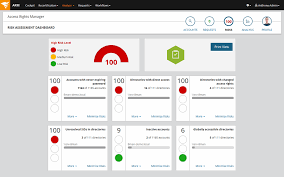The Importance of Monitoring Software in Today’s Digital World
Monitoring software plays a crucial role in the ever-evolving landscape of technology and cybersecurity. As organisations rely more on digital infrastructure to conduct their operations, the need for robust monitoring tools becomes increasingly evident. Whether it’s tracking network performance, ensuring data security, or monitoring user activity, monitoring software provides essential insights that help maintain the integrity and efficiency of IT systems.
Network Performance Monitoring
One of the key functions of monitoring software is to track network performance metrics. By continuously monitoring factors such as bandwidth usage, latency, and packet loss, organisations can identify potential bottlenecks or issues that may impact the overall performance of their networks. This proactive approach allows IT teams to address problems swiftly and optimise network resources to ensure smooth operations.
Data Security and Compliance
Monitoring software also plays a vital role in safeguarding sensitive data and ensuring compliance with regulations. By tracking access logs, file modifications, and user activities, organisations can detect suspicious behaviour or unauthorised access attempts promptly. This level of visibility not only helps prevent security breaches but also assists in meeting regulatory requirements related to data protection and privacy.
User Activity Monitoring
Understanding how employees interact with IT systems is essential for maintaining productivity and security within an organisation. Monitoring software allows administrators to track user activity across applications, devices, and networks. By analysing this data, organisations can identify trends, enforce usage policies, and detect any anomalies that may indicate insider threats or policy violations.
Conclusion
In conclusion, monitoring software is a critical component of modern IT infrastructure management. From enhancing network performance to strengthening data security and ensuring compliance with regulations, monitoring tools provide valuable insights that empower organisations to proactively manage their digital environments. By investing in robust monitoring solutions, businesses can stay ahead of potential threats, optimise their operations, and maintain a secure and efficient IT ecosystem.
Effective Strategies for Optimising Monitoring Software Usage
- Regularly review and analyse monitoring data to identify trends and potential issues.
- Set up alerts for critical events or performance thresholds to ensure timely response.
- Ensure monitoring software is configured correctly to capture relevant metrics and data.
- Regularly update monitoring tools to take advantage of new features and security patches.
- Train staff on how to interpret monitoring data effectively and respond appropriately.
Regularly review and analyse monitoring data to identify trends and potential issues.
Regularly reviewing and analysing monitoring data is a fundamental tip in maximising the effectiveness of monitoring software. By consistently examining the data collected, organisations can uncover valuable insights into their IT environment, identify emerging trends, and proactively address potential issues before they escalate. This practice not only helps in maintaining optimal performance and security but also enables businesses to make informed decisions based on real-time information, ultimately enhancing their overall operational efficiency and resilience against evolving threats.
Set up alerts for critical events or performance thresholds to ensure timely response.
Setting up alerts for critical events or performance thresholds is a key tip in effectively utilising monitoring software. By configuring alerts to notify IT teams or administrators when predefined thresholds are breached or when critical events occur, organisations can ensure a timely response to potential issues. This proactive approach allows for swift intervention, minimising downtime and mitigating risks before they escalate. By receiving real-time notifications, teams can address issues promptly, maintain system stability, and uphold the overall health of their IT infrastructure.
Ensure monitoring software is configured correctly to capture relevant metrics and data.
It is essential to ensure that monitoring software is configured correctly to capture relevant metrics and data effectively. Proper configuration plays a crucial role in the accuracy and usefulness of the information gathered by the software. By setting up monitoring tools to focus on specific metrics that align with organisational goals and objectives, businesses can gain valuable insights into their IT infrastructure’s performance, security, and user activities. This proactive approach not only enhances the effectiveness of monitoring efforts but also enables organisations to make informed decisions based on reliable data, ultimately improving overall operational efficiency and security posture.
Regularly update monitoring tools to take advantage of new features and security patches.
To ensure the effectiveness of monitoring software, it is essential to regularly update the tools to leverage new features and security patches. By staying current with updates, organisations can benefit from enhanced functionality, improved performance, and increased protection against emerging threats. Updating monitoring tools not only optimises their capabilities but also strengthens the overall security posture of IT systems by addressing vulnerabilities and ensuring that the software remains resilient in the face of evolving cybersecurity challenges.
Train staff on how to interpret monitoring data effectively and respond appropriately.
Training staff on how to interpret monitoring data effectively and respond appropriately is a crucial tip when implementing monitoring software within an organisation. By providing employees with the necessary knowledge and skills to understand the data generated by monitoring tools, organisations can empower their teams to identify potential issues, anomalies, or security threats promptly. Effective interpretation of monitoring data enables staff to take proactive measures, address problems in a timely manner, and make informed decisions to enhance network performance, ensure data security, and maintain compliance with regulations. Investing in training programmes that focus on data interpretation not only strengthens the organisation’s overall cybersecurity posture but also fosters a culture of vigilance and accountability among employees.










